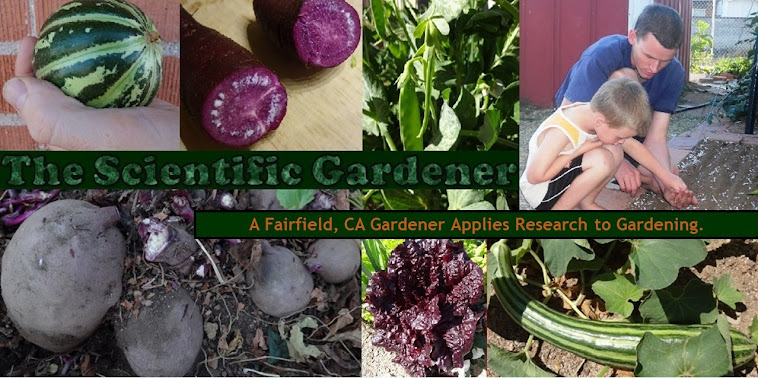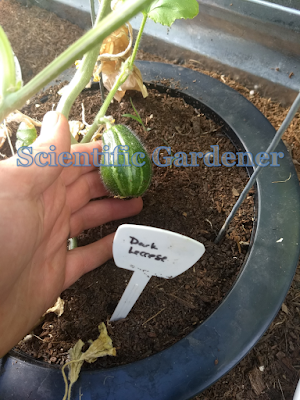As my first opportunity to try out the Tursuluk Kelek cucumber-melon in the greenhouse didn’t end up as I had hoped, I decided to try this variety out in the chicken garden. I began interplanting this variety out in mid June and did my best to give it as much sunlight as possible until harvest in October. Unfortunately, with the high amount of shade in this garden coupled with an early onset of powdery mildew it became very difficult to keep this variety going any longer than I did.
 |
| The Turkish Tursuluk Kelek |
 |
| June 15th, 2019 |
 |
| September 19th |
Seeds of this variety were obtained by my brother while he was visiting Turkey. I was very grateful for him working to get these for me.
 |
| September 27th |
So,
as flavor goes, this cucumber tastes very similar to nor cucumbers –
minus the bitterness and indigestion. However, the firm flesh and
minimal water content makes this variety much less palatable than many
other varieties I have grown.
Having
grown out multiple cucumber-melon varieties before, I could tell from a
very early stage that this variety is a much more firm crisp variety
than I prefer. I could just look at the cucumbers and know. Cucumbers
like this often make good picklers, but poor slicers. This is often the
case with more dense firm varieties.
 |
| October 7th |
The closest variety that I have grown to this one was the Carosello Tondo Tarantino Melone. which I made a video and previously blogged about.
Interestingly, both have similar female flower growth patterns with an
asymmetrical flower, where some of the cucumbers are flat or curved on
one side instead of round.
 |
| Ready to Harvest seed in early December |





































